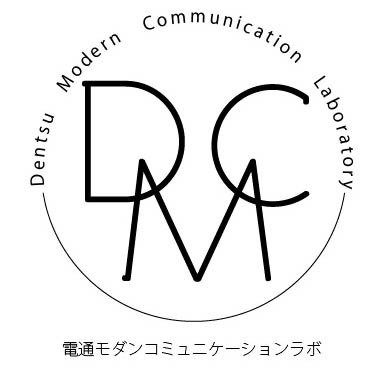Note: This website was automatically translated, so some terms or nuances may not be completely accurate.
"Let's Talk About the Real Deal in Digital Creative, Quickly."
This time, we're featuring "Let's Talk About the Real Deal in Digital Creative, Quickly" (Senden Kaigi) by Kazuya Kosho, representative of Kosho Office and no problem LLC., copywriter /creative director/creative consultant.
If the previous work , "Let's Talk About the Truth of Advertising Copy Here and Now," centered on advertising copy and expounded on the fundamental concepts and unchanging truths of advertising creativity, this book is the practical guide to advertising creativity in the digital realm.
The "Hurry Up" in the title reflects the urgent need for digital transformation among advertising creators. But there's another reason: with the rapid evolution of the digital environment—driven by 5G, AI speakers, and more—the practical tips and case studies presented here are only effective "now," even if the book's core principles remain timeless (So hurry up and head to the bookstore!).

Fully wielding the weapons of mass creativity through digital creativity
This book also chronicles the battles fought by advertising creators who previously focused on mass creative, as they tackled digital creative without altering their foundational theories and achieved results.
Why was this possible?
(Setting aside the individual's talent for a moment) The biggest external factor is that "video ad slots in the digital environment have become more robust." In this book, Mr. Kosho advocates using the term "WebCM" rather than "Web video."
Marketing is a science. It can be described as the process of pushing hypotheses for selling products to the brink of certainty, underpinned by logic. I believed this was achievable with web video too. When web video becomes something where you can predict the outcome—not mere guesswork—and calculate the expected return on investment, that's when it becomes "WebCM." (P26-27)
Just like TV commercials, if we think things through to the very end, create high-quality video assets, and plan with the same precision as TV ad schedules to optimize reach and frequency for the target audience, then the web can become the "sixth mass medium" capable of highly accurate effect prediction.
When it comes to digital creative and promotional planning, early efforts often focused on leveraging "interactivity" via communication channels. More recently, with the widespread adoption of SNS among individuals, attention has frequently shifted to the "viral spread potential" driven by buzz. However, relying solely on viral spread through buzz inevitably makes the expected level of effectiveness uncertain. While this approach is acceptable when conducted as a test marketing campaign separate from the main marketing plan (and indeed, success can yield significant results at relatively low cost), it is extremely risky to stake the fate of a product or service solely on this method.
Recently, we've seen numerous promotional examples resulting in negative buzz (so-called backlash). The root cause often boils down to this: the pressure to "go viral to reach audiences..." and the resulting need for "high-impact concepts..." leads to increasingly extreme approaches. Ultimately, this crosses the line for the audience, resulting in unacceptable expressions (though not mentioned in this book, this is also something I learned from Mr. Kosho...).
Of course, there are methodologies unique to digital creative work.
Now, web commercials bring TV commercial concepts and approaches to the web, but they aren't simply transplanted. The creative must align with the characteristics of the distribution platform (which includes both the platform's inherent features and the viewing attitudes of its audience).
For example, YouTube, with over 40 million users in Japan, is indispensable in planning as a video distribution channel. However, the delivery methods include "pre-rolls shown before the desired video starts," "mid-rolls inserted during playback," and "non-skippable bumpers under 6 seconds." Each has advantages and disadvantages depending on the objective. Furthermore, since YouTube viewers are actively seeking out videos, audio is typically on. However, for "in-feed ads" appearing in social media timelines, viewers often encounter them with sound muted. Without subtitles, the message won't get across.
Other practical tips abound, such as how TV commercials can work by making viewers wonder "What's this ad about?" at the start, then surprising them with "Oh, that's how it goes!" But for web commercials, if viewers think "This doesn't concern me," they'll skip it and move on to other content.
However, the crucial point isn't to memorize these methodologies verbatim. Instead, it's about learning the essential thinking framework: constantly returning to questions like "What state is the target audience in at that moment?", "How are they likely to feel?", and "What actions are they likely to take?", then selecting the optimal approach. This is because digital media, by its very nature, frequently updates ad slot specifications and operational policies. Furthermore, new media and promotional techniques are constantly being developed.
Mr. Kosho refers to this as the "flow-based transformation of digital advertising business models."
Previous models were fixed. Create the creative, get paid, deliver it to the media, and receive a commission. This set format persisted for decades. Creatives only needed to worry about what story to tell in 15 seconds or what visual impact to create in 15 frames. That won't work going forward. Both the advertising mechanisms and the nature of the creative within them are updated daily. (P275)
To Avoid Losing Sight of the Essence of Advertising Creativity
In such a fluid environment, what should we rely on? Both my previous work and this book define the essence of advertising creative as follows:
Advertising creative is a method for creating new relationships between products and people. (P139)
A more element-by-element breakdown of this definition is as follows:
Ad copy is a method for making the target audience recognize the product's advantages as value for themselves. (P30)
In other words, the essence of advertising creativity can be described as "making the target audience recognize a product's advantages as value for themselves and building a new relationship between the product and the target audience."
Digital technology has enabled more precise targeting. This should be a significant advantage for advertising creative as well.
However, digital also presents pitfalls. Because all data can be measured numerically, the core purpose of "building a new relationship between the product and the target audience" is often lost, and the goal of creativity becomes "how to increase the score?" But even if you achieve 1 million views, if the viewers don't perceive value in the product, it won't contribute to sales.
How can we leverage digital while staying true to the fundamental mission of advertising creative? This book offers many insights on that.
If you're even slightly interested, I urge you to read it quickly to catch up on the current landscape. Install the fundamental mindset for digital creative into your brain, and then I recommend updating your software through your own practice!

Was this article helpful?